Monsoon 2018 marked a significant turning point in my life. Upon returning from my travels to Parra, North Goa, I was confronted with the grave news that a 100-year-old Banyan in my Vaddo had been hacked down without any justified reason. This event awakened a deep concern within me, as I learned of several other Banyans that had met a similar fate. By January 2019, I decided to take action and initiated the Goa Banyan Project. I began by sharing a photograph on Instagram of another Banyan in my Vaddo; a Banyan that was a favourite sanctuary for a resident peacock, which would perch on its high branches as it gazed at the sunrise over the paddy fields.
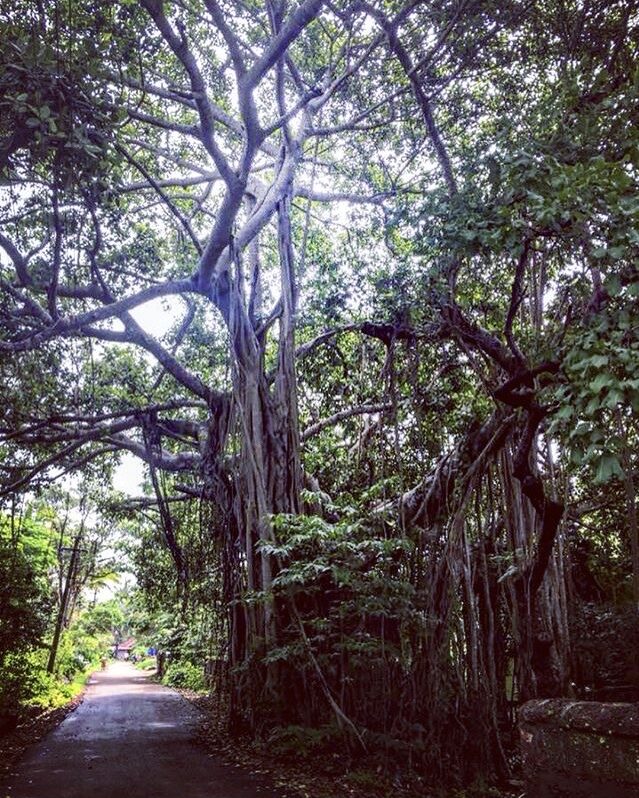
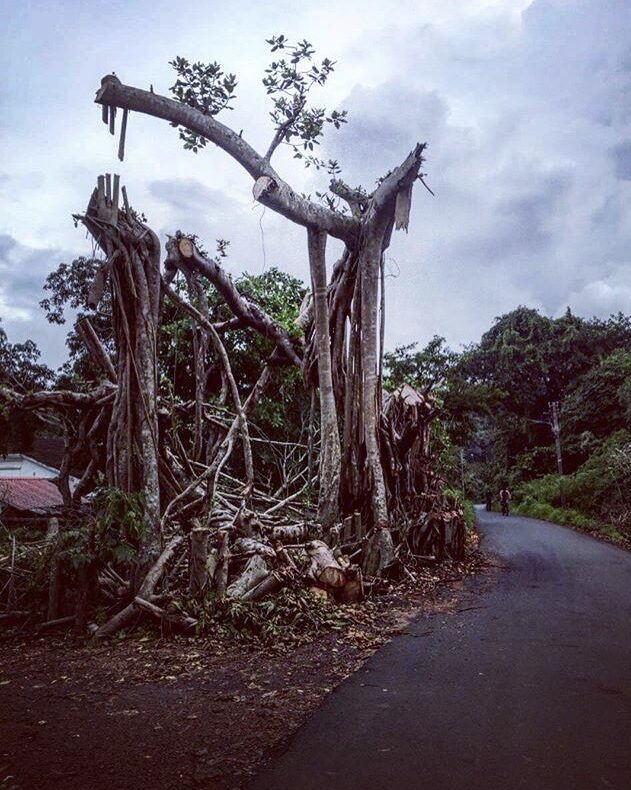
Bokechi Arradi Vado, Para – Before and after hacking
The aim of Goa Banyan Project is to meticulously catalogue these trees. The Project approach involves engaging the local community in conservation efforts. The ultimate outcome is to galvanize a movement that ensures no other Banyans across Goa suffer the same tragic fate as the one in my Vaddo – a Banyan that no longer exists except in our collective saeculum. The Project draws inspiration from Elinor Ostrom’s theory of self-governance, seamlessly applied to real-world challenges. I remember vividly attending her public lecture as a graduate student at the London School of Economics and Political Science; her straightforward insight struck a chord with me: communities can effectively and sustainably manage shared resources when they form robust networks, cultivate norms, and embrace values that foster cooperation, leading to meaningful conservation outcomes.
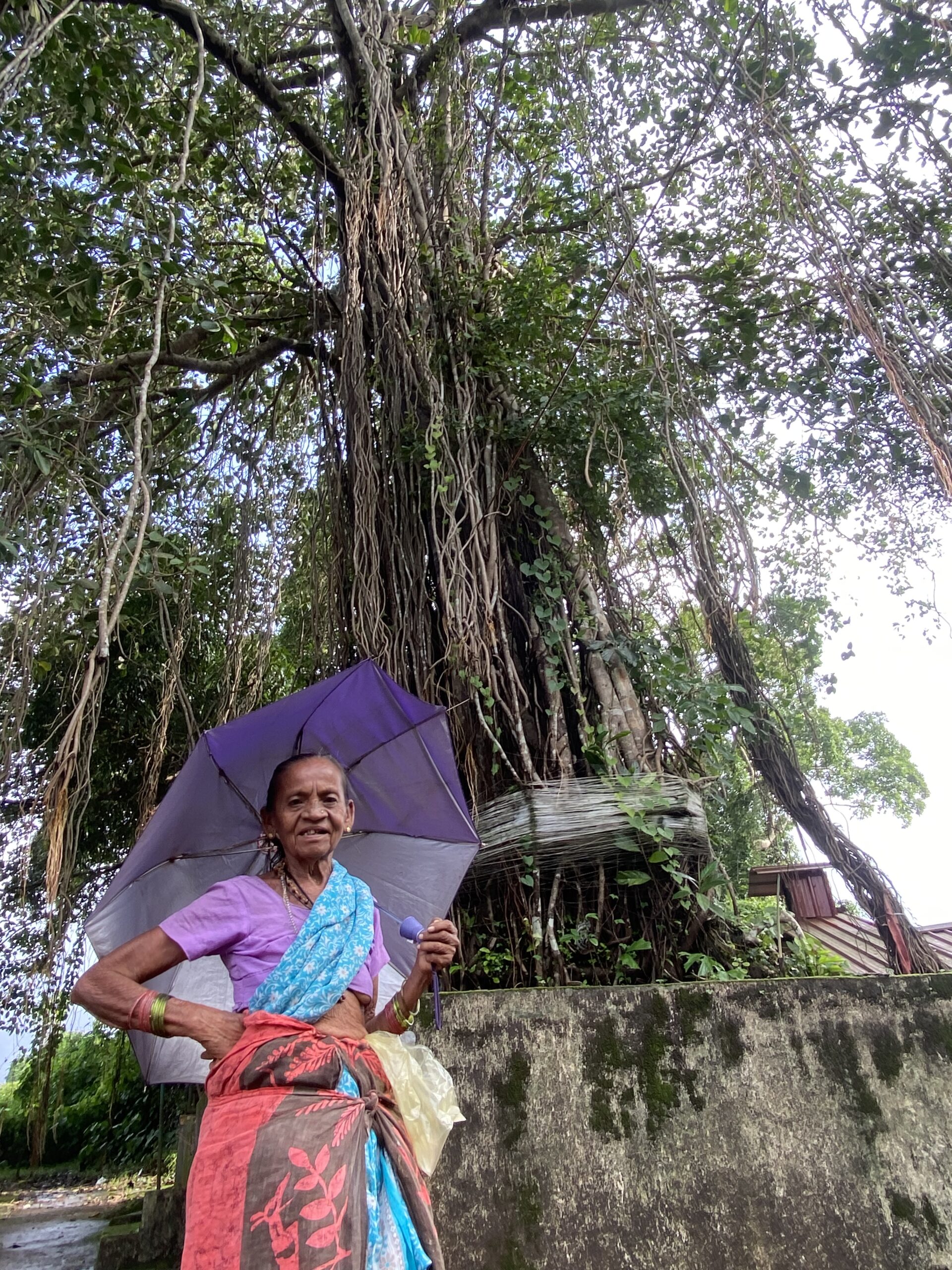
In this spirit, the Project encourages local community participation to catalogue every Banyan tree, noting its location and the date of documentation. Each catalogued Banyan is given markers in a way that communicates its current status: a Black indicates those that have been recently cut down; Red signals those in grave danger, such as those near power lines, along road easements or under threat from property development; Blue denotes those with an unclear status; while Green reflects those that remain safe from immediate threats. To date, the Project has catalogued over 650 Banyans, successfully conserving five or six through timely interventions, community dialogue, and collective action. This initiative has proven that when a recorded Banyan faces potential threat, community members are quick to rally, raising alarm and mobilizing support to safeguard these vital resources. One remarkable moment came in August 2020 when the Project rallied the local community to help a fallen Banyan in Arambol. Through collaboration with local based organizations and a translocator from Hyderabad, we were able to restore the Banyan. Later, the Project benefited from the help of two PhD scholars from the University of Regina, Canada, who used the gathered location data to map Banyans across Goa on Google Earth.
Banyans, with their sprawling canopies and aerial roots, hold a special place in the natural ecosystem and our Indian culture and mythology. These magnificent trees are ecological powerhouses that provide shelter and sustenance to earth and a variety of wildlife, including birds, insects, and small mammals. Known for their longevity and resilience, Banyans are symbols of heritage and continuity, often found in villages and along roads, where they serve as special haven for deities and/or gathering spots for the community.
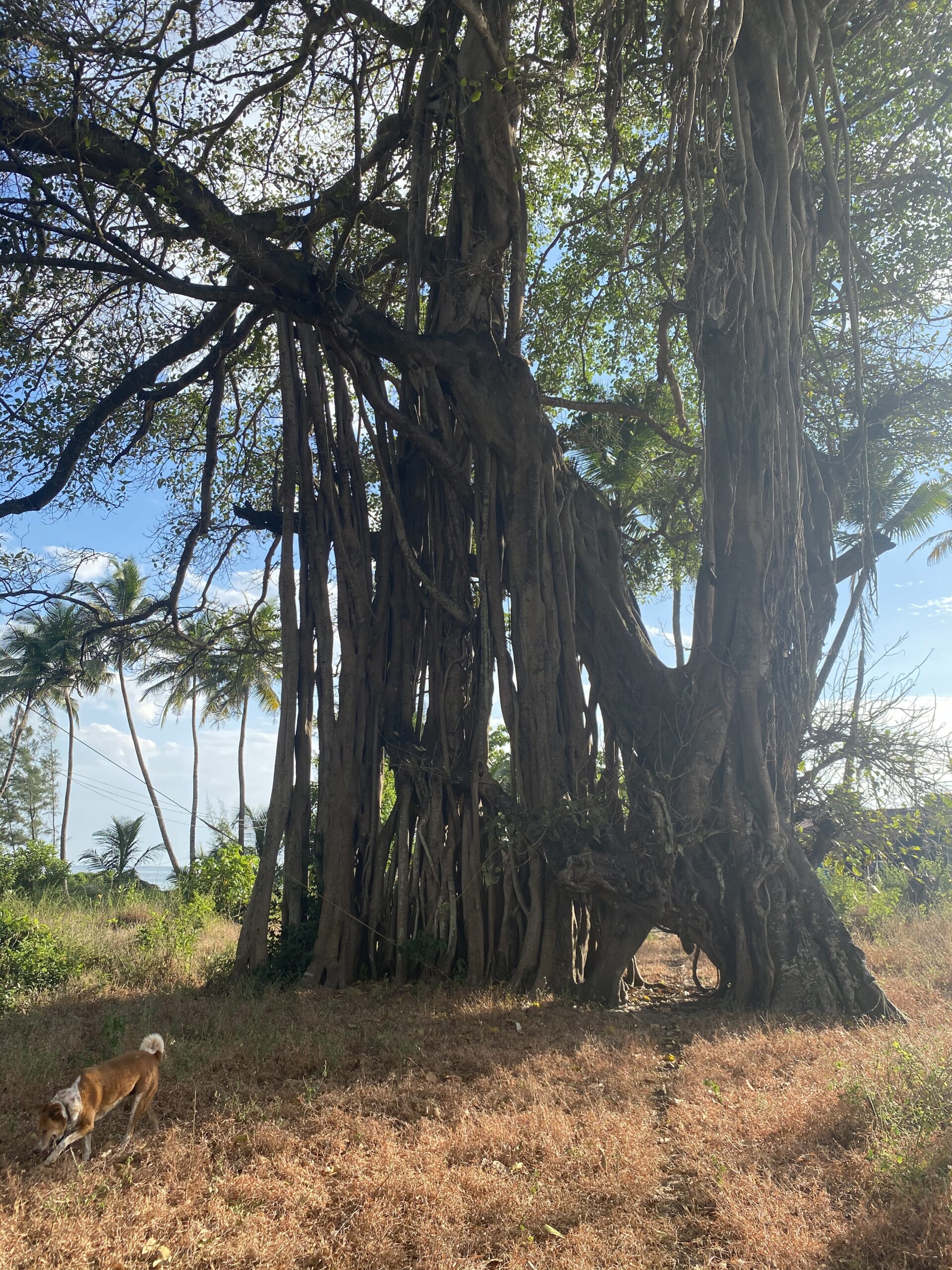
Banyans are a living and breathing physical cultural resource and yet the rich biodiversity and cultural significance of Banyans in Goa are under threat. Rapid urbanization, constant changes in land-use planning, deforestation and climate change poses significant potential risks to these trees, that will lead to a dip in both their numbers and the ecosystems they support, for example the recent cutting in December 2024 of a century old Banyan for the Guirim-Porvorim flyover project, and upto 612 other Trees along that stretch. As Goa continues to develop, it is crucial to prioritize the conservation of Banyans for the benefit of future generations. By acting now, we can secure the legacy of these trees for generations to come, ensuring that Banyans remain a cherished part of Goa’s ecological and cultural landscape.
All photos by Sanober Durrani.
About the author: Sanober Durrani is a Civil and Environmental Engineer and safeguards specialist with over 15 years of varied professional experience in consulting and corporate set-ups in both developed and developing countries. She has worked across diverse grey and green infrastructure sectors and industries as well as with clients from all tiers of government, multilateral financial institutions and with indigenous communities. She has executed and peer reviewed numerous projects on environmental due diligence and safeguards; compliance assurance and regulatory support; industrial air pollution control; water and wastewater treatment and management; climate change risks analysis.

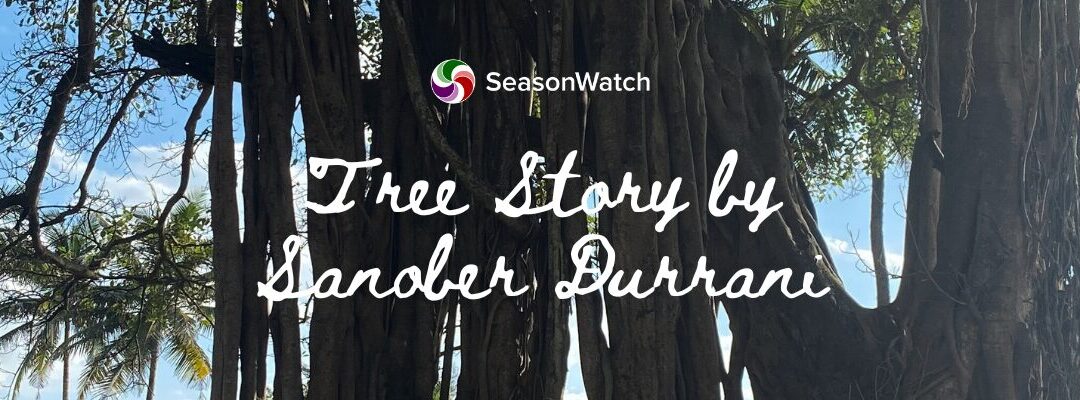




What an incredible initiative!!
Keep doing the great work and collaborate with other local, national as well as global organisations.